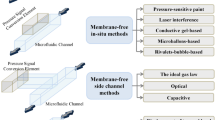Abstract
The hydrodynamics of suction feeding is critical for the survival of fish larvae; failure to capture food during the onset of autonomous feeding can rapidly lead to starvation and mortality. Fluid mechanics experiments that investigate the suction feeding of suspended particles are limited to adult fishes, which operate at large Reynolds numbers. This manuscript presents the first literature results in which the external velocity fields generated during suction feeding of early zebrafish larvae (2500–20,000 μm total length) are reported using time-resolved microscopic particle image velocimetry. For the larval stages studied, the maximum peak suction velocity of the inflow bolus is measured at a finite distance from the mouth tip and ranges from 1 to 8 mm/s. The average pressure gradient and the velocity profile proximal to the buccal (mouth) cavity are calculated, and two distinct trends are identified. External recirculation regions and reverse flow feeding cycles are also observed and quantified. One of the unresolved questions in fish suction feeding is the shape and dynamics of the buccal cavity during suction feeding; optical coherence tomography imaging is found to be useful for reconstructing the mouth kinematics. The projected area of the mouth cavity during the feeding cycle varies up to 160 and 22 % for the transverse and mid-sagittal planes, respectively. These findings can inspire novel hydrodynamically efficient biomedical and microfluidic devices.






Similar content being viewed by others
References
Chen CA, Pekkan K (2013) High-speed three-dimensional characterization of fluid flows induced by micro-objects in deep microchannels. BioChip J 7:95–103
Chen CY, Menon PG, Kowalski W, Pekkan K (2013) Time-resolved OCT-μPIV: a new microscopic PIV technique for noninvasive depth-resolved pulsatile flow profile acquisition. Exp Fluids 54:1–9
China V, Holzman R (2014) Hydrodynamic starvation in first-feeding larval fishes. Proc Natl Acad Sci 111:8083–8088
Dabiri JO, Bose S, Gemmell BJ, Colin SP, Costello JH (2014) An algorithm to estimate unsteady and quasi-steady pressure fields from velocity field measurements. J Exp Biol 217:331–336
Day SW, Higham TE, Cheer AY, Wainwright PC (2005) Spatial and temporal patterns of water flow generated by suction-feeding bluegill sunfish Lepomis macrochirus resolved by Particle Image Velocimetry. J Exp Biol 208:2661–2671
Day SW, Higham TE, Wainwright PC (2007) Time resolved measurements of the flow generated by suction feeding fish. Exp Fluids 43:713–724
Day SW, Higham TE, Holzman R, Van Wassenbergh S (2015) Morphology, kinematics, and dynamics: the mechanics of suction feeding in fishes. Integr Comp Biol 55:21–35
Fuiman LA, Webb PA (1988) Ontogeny of routine swimming activity and performance in zebra danios (Teleostei: Cyprinidae). Anim Behav 36:250–261
Gemmell BJ, Adhikari D, Longmire EK (2014) Volumetric quantification of fluid flow reveals fish’s use of hydrodynamic stealth to capture evasive prey. J R Soc Interface 11:20130880
Gibb AC (1997) Do flatfish feed like other fishes? A comparative study of percomorph prey-capture kinematics. J Exp Biol 200:2841–2859
Hernandez LU (2000) Intraspecific scaling of feeding mechanics in an ontogenic series of zebrafish, Danio rerio. J Exp Biol 203:3033–3043
Higham TE, Day SW, Wainwright PC (2006) Multidimensional analysis of suction feeding performance in fishes: fluid speed, acceleration, strike accuracy and the ingested volume of water. J Exp Biol 209:2713–2725
Holzman R, Collar DC, Day SW, Bishop KL, Wainwright PC (2008) Scaling of suction-induced flows in bluegill: morphological and kinematic predictors for the ontogeny of feeding performance. J Exp Biol 211:2658–2668
Holzman R, China V, Yaniv S, Zilka M (2015) Hydrodynamic constraints of suction feeding in low Reynolds numbers, and the critical period of larval fishes. Integr Comp Biol 55:48–61
Kowalski WJ, Teslovich NC, Menon PG, Tinney JP, Keller BB, Pekkan K (2014) Left atrial ligation alters intracardiac flow patterns and the biomechanical landscape in the chick embryo. Dev Dyn 243:652–662
Parra G, Yúfera M (2000) Feeding, physiology and growth responses in first-feeding gilthead seabream (Sparus aurata L.) larvae in relation to prey density. J Exp Mar Biol Ecol 243:1–15
Rønnestad I, Yúfera M, Ueberschär B, Ribeiro R, Saele O, Boglione C (2013) Feeding behaviour and digestive physiology in larval fish: current knowledge, and gaps and bottlenecks in research. Rev Aquac 5:S59–S98
Staab KL, Holzman R, Hernandez LP, Wainwright PC (2012) Independently evolved upper jaw protrusion mechanisms show convergent hydrodynamic function in teleost fishes. J Exp Biol 215:1456–1463
Yaniv S, Elad D, Holzman R (2014) Suction-feeding across fish life stages: flow dynamics from larvae to adults and implications for prey capture. J Exp Biol 217:3748–3757
Acknowledgments
We acknowledge Prof. Beth Roman from the University of Pittsburgh for guiding our in-house zebrafish larvae culture and their handling protocols. K.P. was supported by NSF CAREER Award 0954465. R.H. was supported by Israel Science Foundation Grants 158/11 and 695/15.
Author information
Authors and Affiliations
Corresponding author
Electronic supplementary material
Below is the link to the electronic supplementary material.
Suction Raw Data. Raw data of two suction cycles are presented. Data are obtained from stereomicroscope and high-speed CMOS camera (MP4 9980 kb)
Movie 2
OCT Transverse Plane. Raw OCT data of buccal cavity along the transverse plane are presented (MP4 739 kb)
OCT Mid-Sagittal Plane. Raw OCT data of buccal cavity along the mid-sagittal plane are presented. The red circle marks the place of short active mouth cavity (MP4 8129 kb)
Rights and permissions
About this article
Cite this article
Pekkan, K., Chang, B., Uslu, F. et al. Characterization of zebrafish larvae suction feeding flow using μPIV and optical coherence tomography. Exp Fluids 57, 112 (2016). https://doi.org/10.1007/s00348-016-2197-6
Received:
Revised:
Accepted:
Published:
DOI: https://doi.org/10.1007/s00348-016-2197-6




